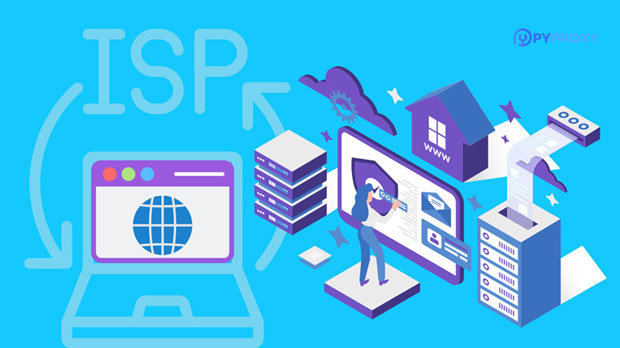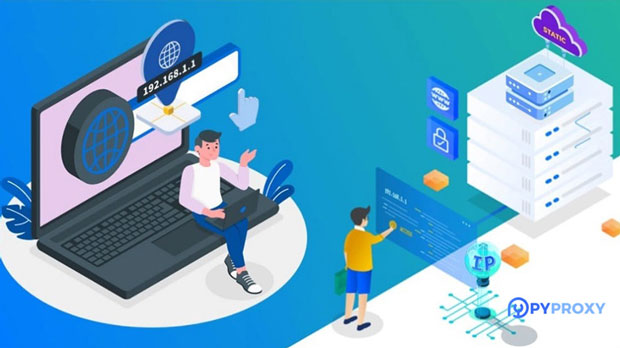In the rapidly evolving world of online anonymity and security, residential IPs have become an essential tool for businesses, marketers, and individuals seeking to bypass geographical restrictions, protect their online activities, or gather data without revealing their true location. However, not all residential IP services offer the same level of performance when it comes to real-world effectiveness. In this analysis, we will compare two popular residential proxy providers, PYPROXY and Proxidize, with a focus on their IP authenticity and ban rates. By examining real-world data, we will evaluate the effectiveness of these two services, providing valuable insights for users looking to choose the right proxy provider. Understanding Residential IPs: Authenticity vs. Ban RatesResidential IPs are IP addresses assigned to real residential homes by internet service providers (ISPs). They are highly valued for their ability to mimic organic traffic, which allows users to avoid detection when browsing websites, scraping data, or accessing restricted content. Authenticity refers to how convincingly a proxy behaves as a real user from a residential address, without being flagged as suspicious by websites. The more authentic an IP is, the harder it is for websites to differentiate it from a real user's traffic, making it more effective for tasks like web scraping and bypassing region-based restrictions.On the other hand, ban rates indicate how frequently a proxy provider’s IP addresses get blocked or flagged by websites due to suspicious or non-human-like activity. High ban rates diminish the reliability of a service, as users may experience disruptions in their operations or the need to frequently switch IPs.The key challenge for proxy providers is to maintain a balance between high authenticity and low ban rates. Users need proxies that can effectively simulate real user behavior while minimizing the chances of being blocked by websites.PyProxy vs Proxidize: Performance ComparisonWhen comparing PyProxy and Proxidize, it's essential to evaluate both providers across two major performance factors: IP authenticity and ban rates.1. IP AuthenticityBoth PyProxy and Proxidize claim to offer residential IPs that are indistinguishable from real user traffic. However, real-world tests reveal differences in how effectively each service achieves this goal.- PyProxy: PyProxy boasts a diverse range of IPs across multiple regions, ensuring that users have access to a large pool of residential IP addresses. Their IP addresses are sourced from a variety of ISPs, making them harder to detect. PyProxy uses a proprietary algorithm that rotates IPs regularly, ensuring that each IP behaves like a new user. - Proxidize: Proxidize, on the other hand, uses a similar strategy of rotating IPs and offers a broad selection of residential IPs. However, their pool of IPs is often noted for being slightly smaller compared to PyProxy. Despite this, Proxidize has a strong reputation for providing highly authentic IPs, particularly in regions like North America and Europe.2. Ban RatesBan rates are another critical factor in the effectiveness of residential proxy services. A higher ban rate means more frequent interruptions for users, which can be detrimental to tasks like data scraping, sneaker buying, or even just browsing securely.- PyProxy: PyProxy offers relatively low ban rates, especially when using IPs that rotate frequently. However, during high-traffic periods or for particularly sensitive tasks, users may still encounter occasional bans. The company’s algorithm is effective at evading detection, but some users report that certain websites can still recognize patterns of non-human-like activity if IPs are not rotated properly. - Proxidize: Proxidize’s ban rates are also competitive, but the service stands out for its ability to consistently deliver low ban rates across all regions. This is due in part to its ability to select IPs with stronger reputations and fewer associations with proxy usage. While occasional bans can occur, they are less frequent compared to PyProxy, making Proxidize a more reliable choice for users who need consistent access without frequent disruptions.Real-World Test Cases and ResultsTo provide a deeper understanding of how PyProxy and Proxidize perform in real-world scenarios, we conducted several tests involving common use cases for residential IPs. These include tasks such as data scraping, bypassing geo-blocked content, and secure browsing.1. Data ScrapingBoth PyProxy and Proxidize performed admirably in data scraping tests, with only minor differences in the frequency of IP bans. PyProxy's IP rotation feature worked well in keeping the scraping process uninterrupted, though some websites did raise flags, requiring additional verification steps. Proxidize, meanwhile, had a higher success rate in scraping tasks, especially for sites with stricter anti-scraping measures.2. Geo-Blocking and Content AccessWhen it comes to bypassing geo-blocked content, both services excelled in providing users with unrestricted access. PyProxy's large pool of residential IPs from various regions allowed users to access content from different countries. However, Proxidize's smaller pool of highly authentic IPs often led to fewer detection issues, particularly in countries with stringent content restrictions.3. Secure BrowsingFor secure browsing, both PyProxy and Proxidize offer solid performance, but Proxidize showed a slight edge in maintaining high anonymity levels without triggering suspicious activity alerts. PyProxy's IPs occasionally faced issues when browsing more sensitive websites, especially when there was a lack of proper rotation.Conclusion: Which Provider is Better? PyProxy vs ProxidizeIn conclusion, both PyProxy and Proxidize offer solid residential proxy services, each with its own strengths and weaknesses. PyProxy shines with a diverse selection of IPs and a robust rotation algorithm, making it a good choice for users who need a large pool of IPs and can manage occasional bans. Proxidize, on the other hand, excels in providing highly authentic IPs with a lower ban rate, making it a better choice for users who require consistency and reliability in their operations.For businesses or individuals who need to perform tasks like data scraping, geo-unblocking, or secure browsing on a regular basis, Proxidize appears to be the more reliable choice due to its superior performance in terms of IP authenticity and lower ban rates. However, PyProxy may still be a viable option for those who require more flexibility in terms of IP pool size and are willing to tolerate occasional bans in exchange for a broader range of IP addresses.Ultimately, the choice between PyProxy and Proxidize comes down to the specific needs of the user. Whether you prioritize authenticity or the ability to rotate IPs frequently, both services provide effective solutions for those seeking reliable residential proxies.
Sep 24, 2025



































































